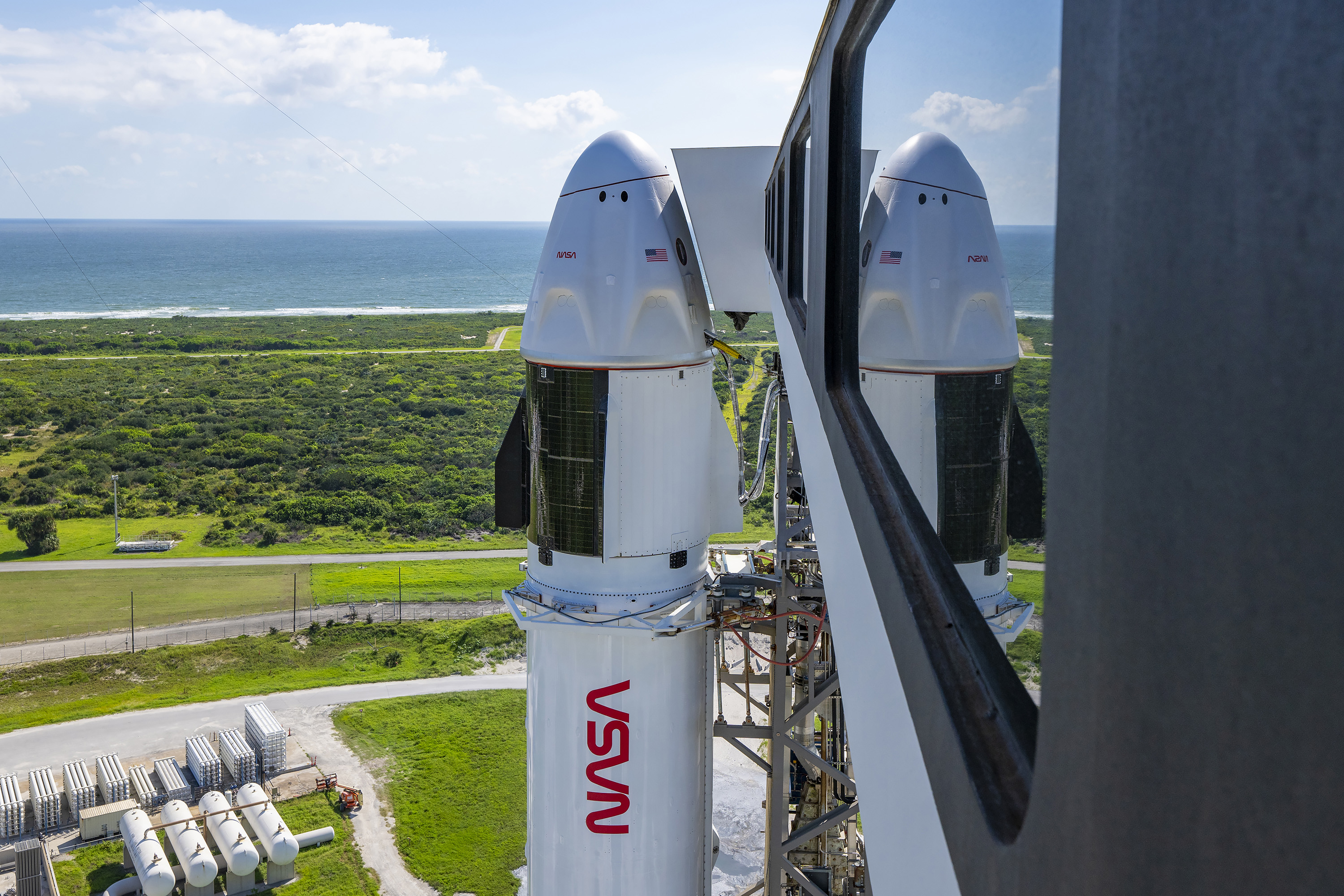
NASA and SpaceX teams have adjusted the next launch opportunity for NASA’s SpaceX Crew-9 mission to no earlier than 1:17 p.m. EDT, Saturday, Sept. 28, from Cape Canaveral Space Force Station in Florida due to expected tropical storm conditions in the area. The change allows teams to complete a rehearsal of launch day activities Tuesday night with the SpaceX Dragon spacecraft and Falcon 9 rocket, which rolled to Space Launch Complex-40 earlier in the day. Following rehearsal activities, the integrated system will move back to the hangar ahead of any potential storm activity.
Although Tropical Storm Helene is moving through the Gulf of Mexico and expected to impact the Florida panhandle, the storm system is large enough that high winds and heavy rain are expected in the Cape Canaveral and Merritt Island regions on Florida’s east coast.
NASA astronaut Nick Hague and Roscosmos cosmonaut Aleksandr Gorbunov are to launch aboard the Dragon spacecraft to the International Space Station on what will be the ninth crew rotation mission with SpaceX under NASA’s Commercial Crew Program. They will conduct research and perform maintenance activities during their five-month mission. The mission is launch from Space Launch Complex-40 at Cape Canaveral Space Force Station in Florida.
